In New York, I had grown up around a lot of worldly kids – kids who’d lived abroad and spoke three or four languages, who did summer programs at Heidelberg and spent their holidays in places like Rio or Innsbruck or Cap d’Antibes.
My eyes skidded on this line from Donna Tartt’s acclaimed (and now Pulitzer-winning) novel, The Goldfinch. Cap d’Antibes was – according to her 13-year-old protagonist, and quite possibly the author herself – one of those most sophisticated of places.
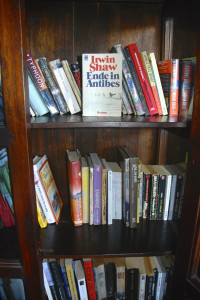
The name of our dear Antibes and its integral peninsula certainly get bandied about. While French Lessons went off on safari last week in Botswana – an elephant-load of thanks to Philippe, by the way, for filling last week’s spot with an offbeat and provocative view of France’s economic travails – the bush hotel’s small library offered one title that hit out at my eyes just as Donna Tartt’s line did. Beggarman, Thief, a novel by American author Irwin Shaw, received a surprising new title for the German market: Ende in Antibes.
Antibes, and its reputation, obviously get around. This summer French Lessons has at times jumped on this worldly bandwagon, offering glimpses of the Côte d’Azur’s more glitzy antics – from meeting with Prince Albert in Monaco to dining (American Independence-style) at the luxurious Grand Hôtel du Cap Ferrat. But these events took place over there, just down the twinkling coastline from Antibes.
Yes, sure, a short bike ride from our own Bellevue is the Hôtel du Cap. It’s one of the most glamourous addresses anywhere. And all those years ago, Coco Chanel did “invent” the suntan in this corner of paradise. But while Monaco’s royals and Cannes’ film festival keep the French Riviera basking in its legendary limelight, Antibes sits more quietly in the middle of these two cities. Somehow, amid the celebs’ playground, Antibes manages to preserve its roots. It retains its connection to all those good, quintessentially French things that the visiting, stylish and multilingual world wants to see.
We’ll come clean. French Lessons is feeling the call of the African wild. The writing brain is still lolling under big African skies. While we get back to our usual senses and prepare for a meatier subject next week, here’s an insider’s glimpse at Antibes shot by our lenses this summer. There’s much to admire, as several masters – Monet, Meissonier, and Boudin among them – pointed out long ago:
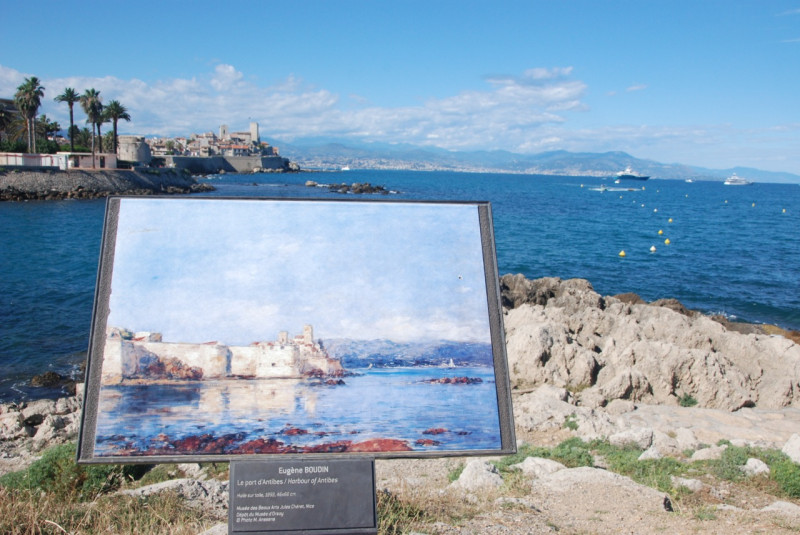
Antibes still has its narrow lanes . . .
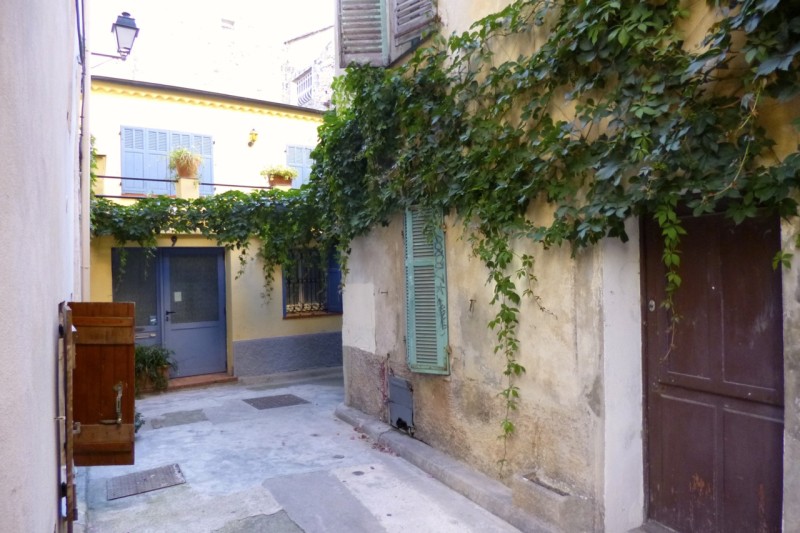
. . . even if some folks have quirky ideas about how to keep them festive:
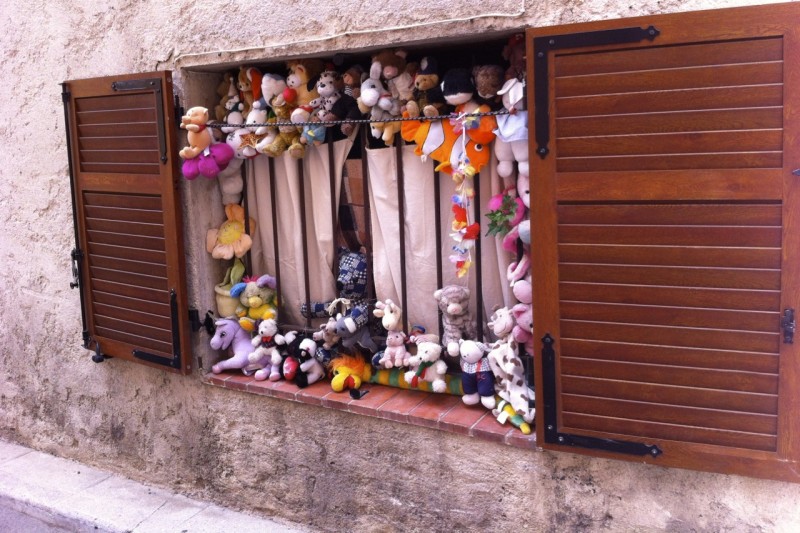
Our summer town guards certain traditions, too. The higgledy-piggledy Safranier district, one of Antibes’ oldest, is inhabited by independently-minded folk who’ve labeled their patch a commune libre. Last month we stumbled into the free municipality’s annual, open-air ball:
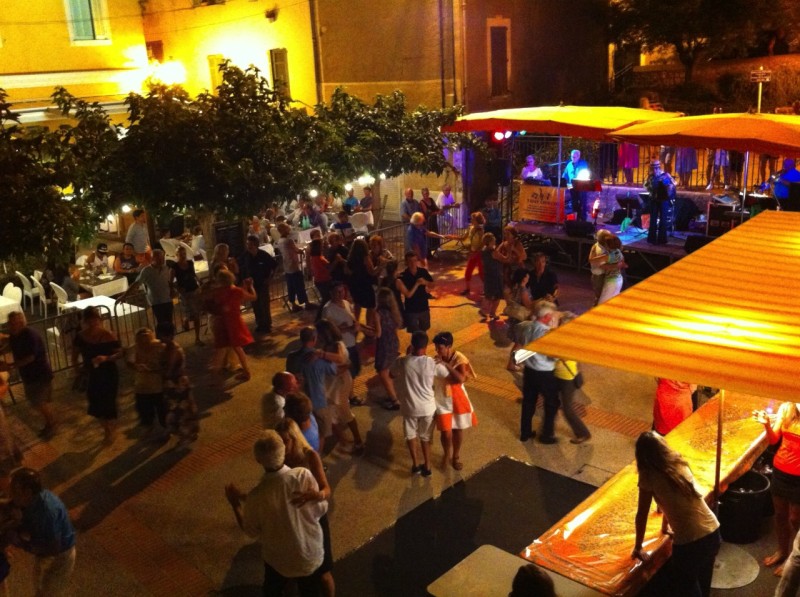
Antibes also upholds the intrinsic French adoration of food, whether its restaurants are nestled into small lanes . . .
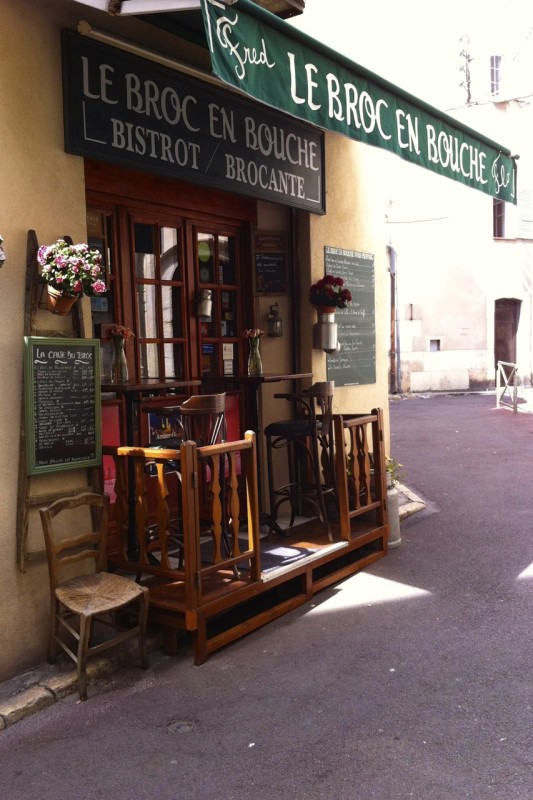
. . . or along the sandy beaches:
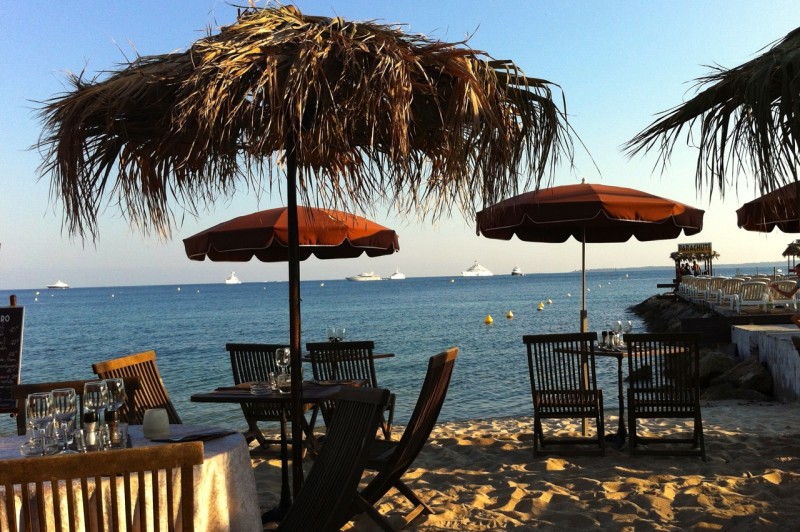
And why not start the adoration closer to its source? The Marché Provençal is one of the prettiest markets around, whether you’re picking up spices . . .
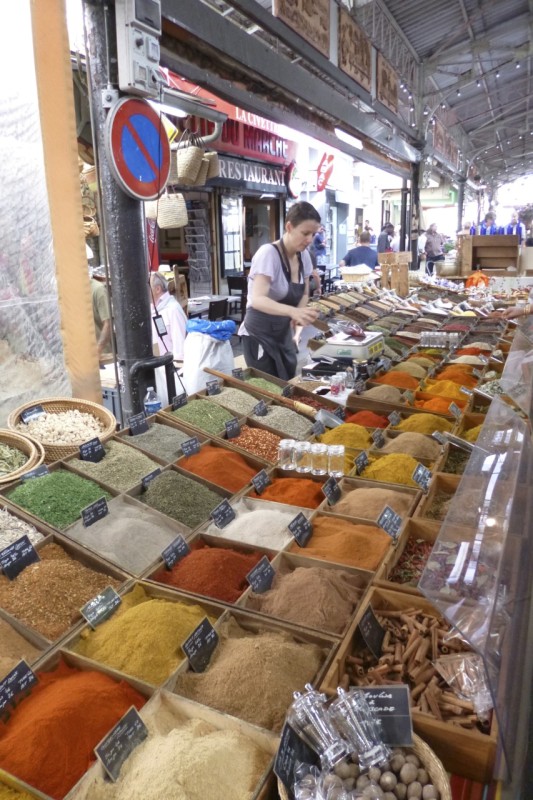
. . . or sausages . . .
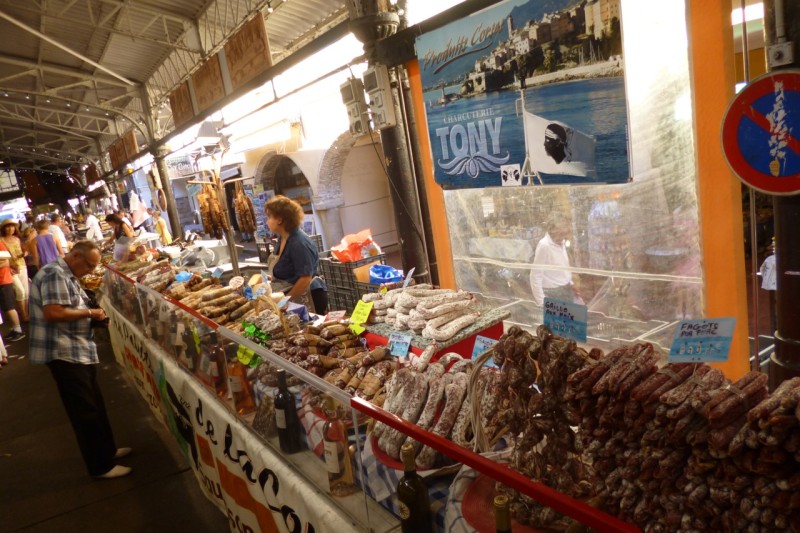
. . . or vegetables:

Also available here are fleurs de courgettes. Cooking with zucchini flowers is a particular art. (We tried it once with scant success.)
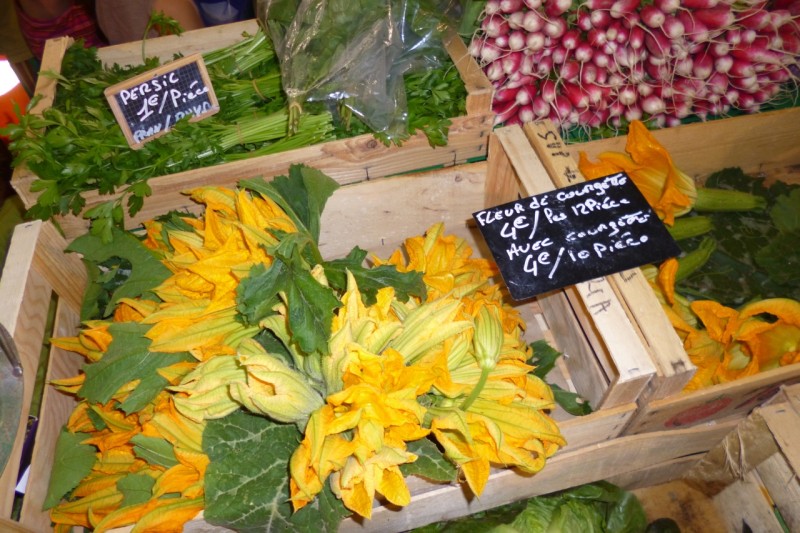
When it comes to food preparation, beauty is just as important as taste – even if you order a simple salad at La Brasserie . . .
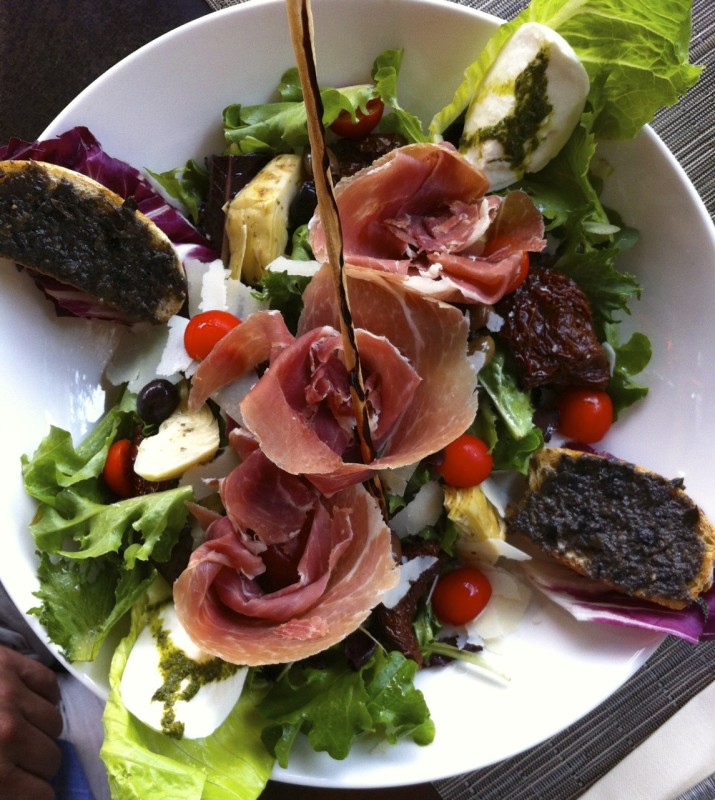
. . . or an ice cream cone at Pinocchio’s:
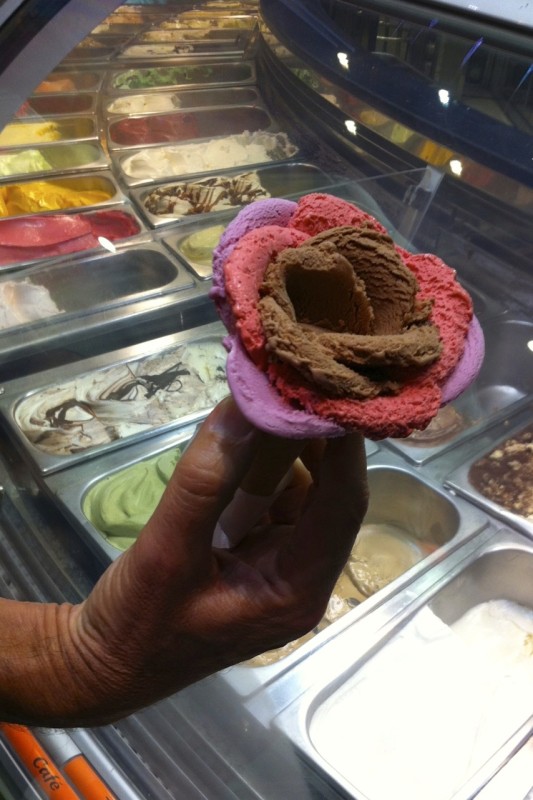
And – whoa – this magnificent artwork came out of the ovens when we ordered a cake for our friend’s 40th:
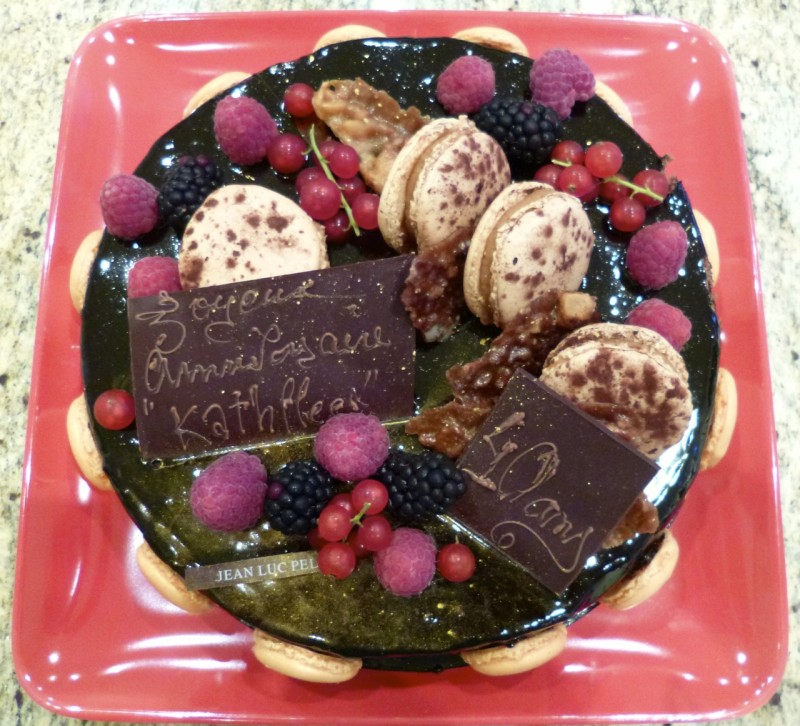
Jean Luc Pelé, a local pâtisserie, is known for its imagination. Take their colourful display of French macarons. Alongside traditional strawberry, lemon and Nutella varieties, these bakers have created flavours like litchi and champagne. Recently they’ve gone further out on the limb:
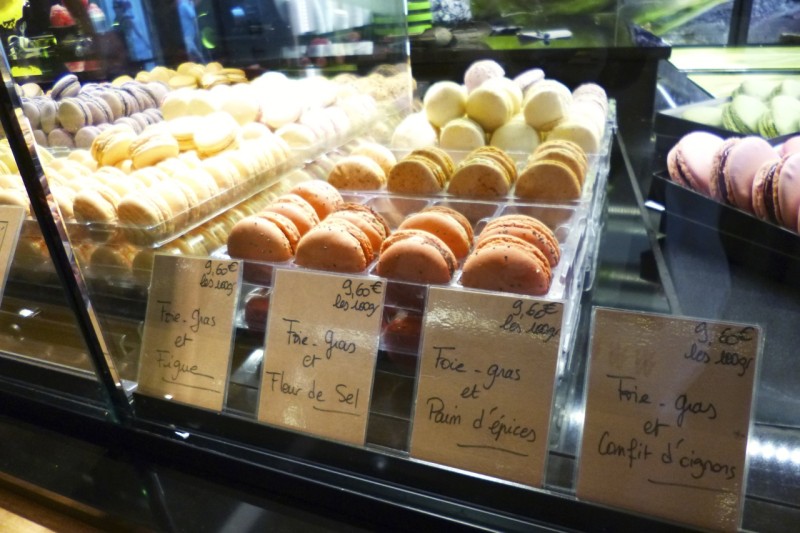
Fois gras with figs, or salt, or gingerbread, or onion preserves? Maybe – but then in the form of a cookie?
But rest assured. Alongside such creativity, the old ways linger. A few traditional pointus occupy the small port next door to Bellevue . . .
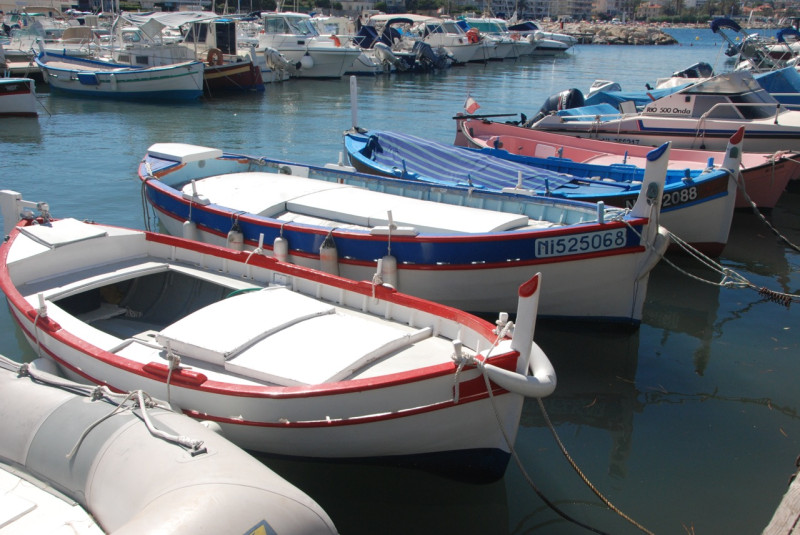
. . . and it’s still happily-ever-after under the bleu-blanc-rouge at the city’s mairie:
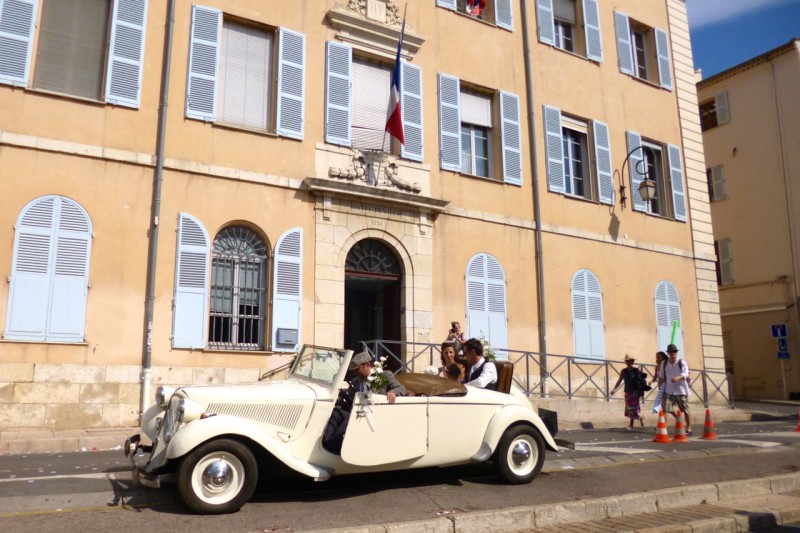
Yes, the rest of the world may know Antibes à la The Goldfinch. On one hand, it’s where a diverse (and sometimes glittering) clientele chooses to live it up during the summer holidays. But there’s a well-guarded authenticity here, too. At the end of every day, everyone simply drinks in the fireworks.
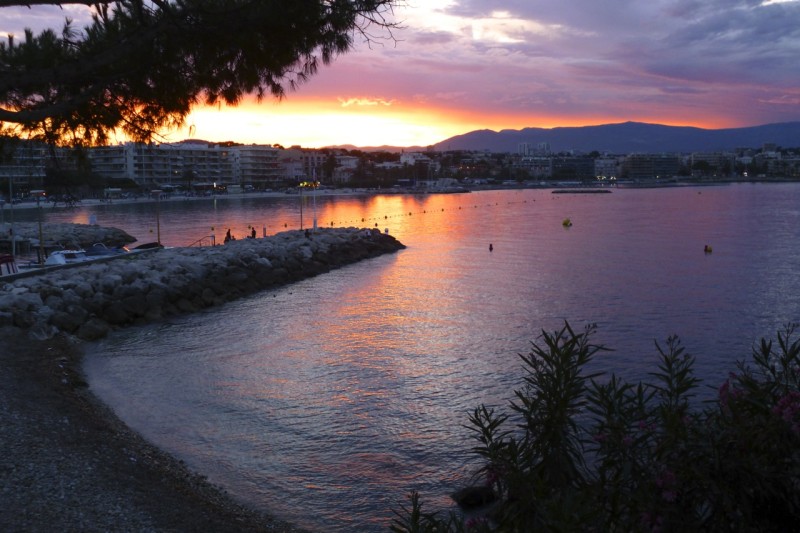
Last week in Botswana I was chatting about Antibes with one of the hotel staff. Lu is a well-travelled South African, and she knows Antibes. Of course she does. But what she likes about this town, she said, is hardly its Côte d’Azur glamour. No, she likes our town because it has managed to escape the Riviera’s usual madness.
Like us, what Lu likes about Antibes is that it has retained a sense of the real France.

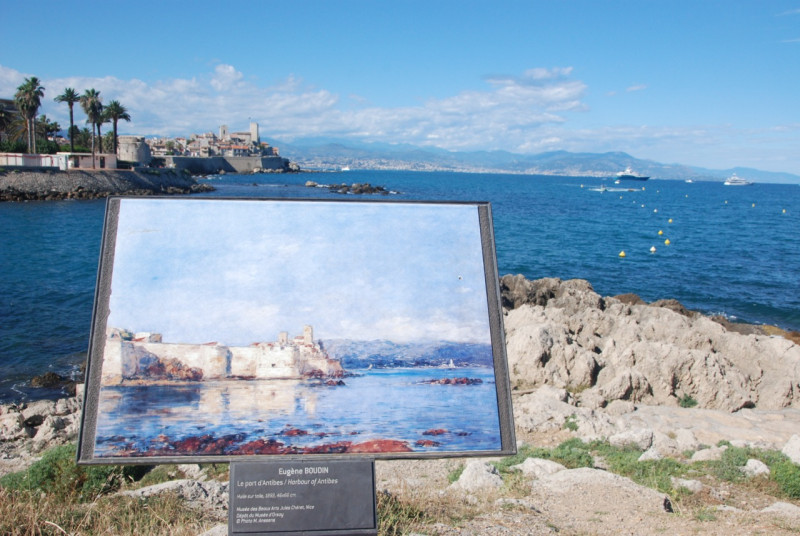
I must reply. The photos are simply grand! They tell their story of your beautiful spot on earth. Thank you for doing that!